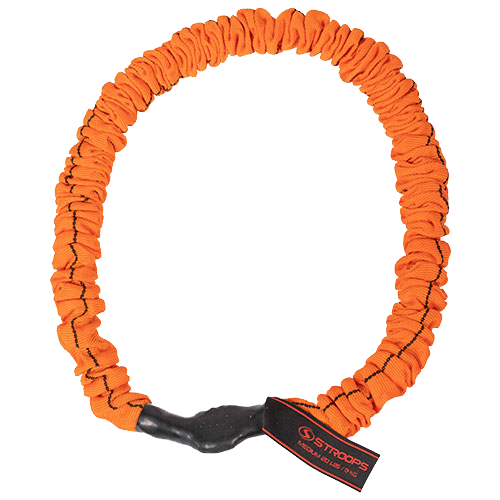The Loop is the quintessential circular resistance band, incorporating Slastix resistance band technology with arguably the most popular form of resistance band in the industry. With this guide, learn how to use the Loop for different muscle groups, get some help in optimizing your band use, and get a start on a whole range of exercises.
Often called booty bands, loop bands, or fitness loops, circular resistance bands like the Loop are perfectly portable, require no anchoring, and can be used to work out your entire body. The Loop is offered in five different resistance levels to best suit your strength and fitness level.
Your workout is going to be more comfortable with the Loop thanks to Slastix technology. By having a safety sleeve on your elastic band, you’ll have the confidence of your band lasting longer and staying durable, and you’ll also avoid the common pitfalls of elastic training like irritating skin pinches and hair tugs.
Loop bands are often referred to as “booty bands” for a reason; many of the most popular exercises done with them target your thighs and glutes to aid in sculpting those muscle groups. That’s not all a Loop can be used for, however.
The Loop works to tone more than just your booty and legs. Avid users of the Loop can diversify this exercise tool into a full-body workout replete with exercises that target virtually every muscle group. A great starting point on how to make this possible for you with your Loop is by accessing Stroops’s free Training Room. This resource gives you dozens of instructional videos, from specific exercises to full workouts, all with Slastix resistance band-based products with professional personal trainers. The link included here will take you right to a library of all exercises with the Loop.
For most lower body exercises, you’ll wrap the Loop around your legs. The two main spots to place it are at your ankles or just above your knees. The most optimal placement is roughly 2-3 inches above the knees or just above the fibula on your ankle.
For upper body workouts, most will involve you holding the Loop in both hands, one on each end.
Regardless of what kind of workout you are doing, there are a few things you can do to make sure you are using the Loop in the most effective way possible.
The covered portion of your Loop—the part not concealed by the safety sleeve—is where the band connects to itself. There is little to no elasticity in this portion, so it works best as a handle. Hold this portion in your hands for upper body workouts or keep it on your ankle or leg for lower body workouts, and this will keep the Loop having an even stretch during your movements.
Along with that, users of circular resistance bands have long had the same issue: the band won’t stay in the right place. Loop bands often roll out of place or slide off a user’s ankle or thigh when being stretched, creating difficulty in smoothly working through your routine. The Loop’s Slastix band covering helps to combat this issue, but it’s also a good idea to pay special attention to the positioning of your band. Keep the Loop no more than approximately 2-3 inches from your wrists, ankles, or knees when exercising.
Stroops also provides another option for a more stable, secure Loop band, the Loop Deluxe. The Loop Deluxe has the same resistance and versatility as the standard Loop, but it comes with padding and two buckles on each end of the band. These buckles can be secured to your legs or arms to keep the band from moving out of position, a solid and definite fix for a rolling or slipping loop band.



